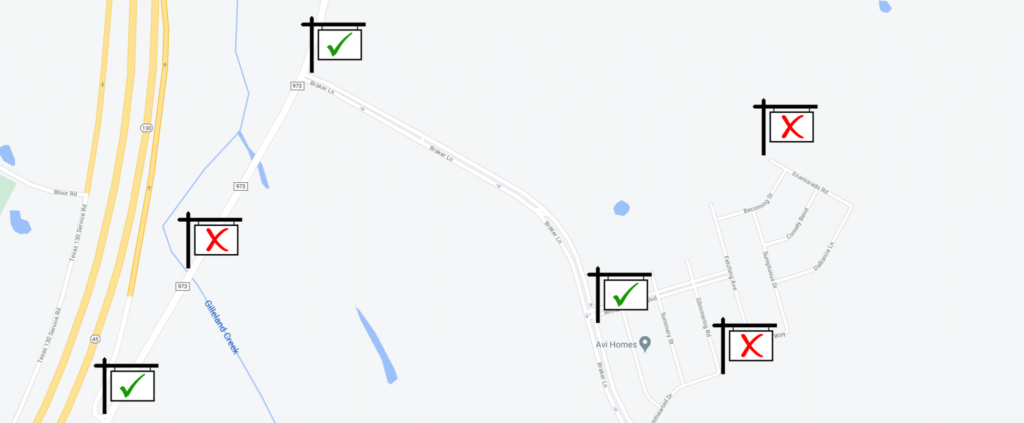Everyone in the real estate world knows: Some listings get hundreds of leads while some get just a handful (or even none). Cracking the whole code behind this discrepancy remains elusive, but some agents and brokers have deduced one or two of the most important variables. Those who take a more strategic approach to advertising their listings often tap into the so-called “honey pot effect” and bring in buckets of leads while colleagues look on with envy.
How can you share in this bounty? The DriveBuy team, in association with our friends in real estate, have identified at least a few of the variables that frequently help listings generate more leads. With a good strategy and the tools to match, you can benefit from our code cracking efforts and start seeing some lead traffic on those sleepy listings you have on your desk. Use these three road traffic factors to build a strong real estate sign placement strategy.
Amount of Road Traffic
“Obviously,” you’re thinking. Yes, but agents still need to master the basics before moving onto the more advanced strategies. Signs placed in areas with minimal road traffic will almost universally yield minimal leads. Everything that follows from this must start with a sign placed where a significant number of vehicles (or perhaps pedestrians) will pass by the sign and increase your odds of netting a lead.
Locals know traffic patterns best, but Google Maps can also be your friend! Take a serious look at traffic flow and find stretches where cars consistently bottleneck (more on that in the next section). Mark on your map where you place your signs, and revisit the map every week or so to evaluate which placements are working well and which signs clearly need to be redeployed.
Speed of Road Traffic
Now we’re getting a bit fancier. Some real estate agents might read the previous section and fall into a common trap: Pick any big, congested road and call it a day! Not so fast. Vehicles often move at 70 miles per hour down a highway or 45 miles per hour on a larger suburban throughway. Drivers moving at those speeds are unlikely to even register your sign. On the off chance they do notice it, they will almost certainly fail to read the actual text. This is a sure recipe for a sign that will not perform.
Savvy real estate agents will mark the map they created in the previous section with speed limits for various streets. This offers a crucial visual aid for balancing the amount of road traffic with speed of road traffic (since the two often have a negative correlation with each other). You find the sweet spots for real estate signs where a significant amount of road traffic meets a particularly slow speed limit sign or other speed-degrading obstacle (like the corner of an intersection).
Type of Road Traffic
Okay, you have your map printed out and marked up. You’ve placed your signs at precise confluences of significant road traffic and slower speeds. Yet still, some signs aren’t generating the increased volume of leads you had hoped. What’s missing?
The third, and trickiest, road traffic factor in your sign placement strategy is type of road traffic. This means the people behind the wheels of all those slowing cars and trucks you’ve targeted with your signs. Who are they? Boomers, Millennials, or Gen-Xers? Local or visiting? Renters or home buyers?
This is where the content of your sign really comes into play. For example: Most Millennials, especially on the move, will not take the time to type your mobile number into their iPhone and have a ten-minute chat with you before knowing anything else about the property. You must adapt your sign to the drivers you aim to convert!
DriveBuy Enables an Optimal Real Estate Sign Placement Strategy
Real estate agents and brokers: Follow these steps and you’ll likely reap the benefits sooner than you think! A deliberate strategy accounting for amount, speed, and type of road traffic often results in high-performing signs and serious lead volume.
DriveBuy helps agents and brokers maximize the effectiveness of this strategy. Our custom signs use mobile texting to automatically send property info to leads and notifications to agents. Our system also enables you to quickly and easily create mobile-optimized web listings for lead capture. Click here to learn more!

